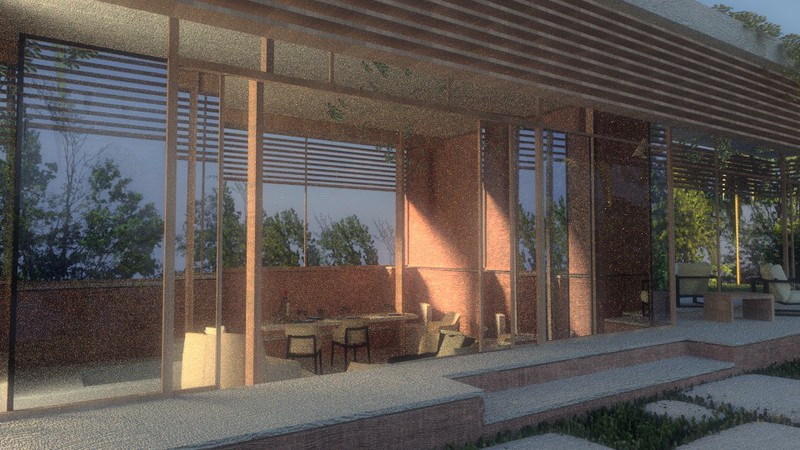How to learn architecture
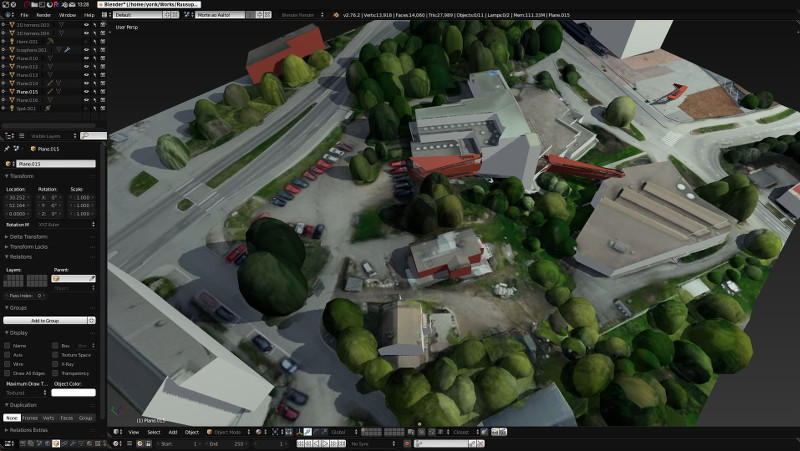
I've heard a couple of people asking this recently, and I like the idea of trying to learn architecture outside of the conventional way, so here are a couple of ideas. This is all just personal opinion, okay? I'm also illustrating this article with works of mine, in no particular order or meaning, just to make the text more digestible (please forgive the self-promotion).
Foreword : Architecture vs ArchViz
Most people who told the above question come from the 3D modelling realm (Blender mostly), and many don't make a distinction between Architecture and Architecture Visualization (ArchViz). Although this might horrify many architects, I actually think it makes some sense. Traditionally, architecture would be the design of the building, while archviz would be only the modelling + rendering of an architecture project that was already designed (by someone else in most cases). Many architects think the second part is not architecture but just something you pay someone to do, to sell your project better.
However, what many architects do is basically take pieces of other projects, and make something new from those pieces. This is not necessarily bad practice, after all, any artistic creation is a collage of ideas gathered somewhere else. But in what regard is this fundamentally different than archviz (taking someone else's project, and do something new - images, models - with it)? And also, if an architect designs a building "in his head", so to speak, then there is someone else who, by doing the archviz, gives form to that building, who actually did the real architecture work? This is far from obvious. Even if the first architect actually produced some drawings, wouldn't the fact that the project still needs an archviz job indicate that it is, in fact, not complete? And how important is that last part?
Besides, the traditional way of representing architecture, with line drawings, is probably doomed to oblivion soon. It only existed while we had no better way. But most people will understand your project better with 3D (real-time or rendering), and the other side, where construction people must understand your project technically (how to build it), that still needs technical drawings for now, might change soon too. Most other engineering specialities already model more for machines to read than for humans. Only a fool would believe this won't happen with construction too...
Finally, if you have good modeling and rendering skills, there is no denying that it is extremely useful, if not fundamental, for your architecture work. For example when you decide materials, lighting, ambiances, etc. Not to talk about the obvious relationship between your capacity at 3D modeling and your capacity to give form to your ideas. In some projects where these things are very important, it is not rare that the person who does the archviz is in fact who did most of the project...
The famous Blender guru Andrew Price understood this pretty well with his Architecture Academy. It is an online course to teach you architecture and archviz at the same time, as one unified thing. I find that approach clever and brilliant. I encourage you to abandon that separation too, and consider the act of modeling and rendering your architecture work as fundamental as the rest. Next generations of architects will probably find it silly to think otherwise.
Architecture
First thing is about "formal" architecture education (means: go to the university/arch school and get a degree): The truth is that it absolutely not indispensable to learn architecture. Most of the things you learn there can be found in books and online (although it requires more effort than having it fed to you in a class), and the most important part, which is how to make good architectural projects, they don't teach you at all (you end up learning by doing, which you can do by yourself too).
The important part that you get when doing the university course, is the diploma. In almost any country, the practice of architecture is restricted. To build something, the owner of the future building must ask permission to local authority (usually the city council). This permission can only be requested or signed by the holder of an architecture or engineering degree. This means that without a degree, you won't be able to legally build your own projects. There are some workarounds of course, the most common being to work with someone else who has such a degree and will sign for you (in an architecture office you need only one person able to sign). I know a lot of people who do architecture projects and have no formal degree.
There is also a whole part of architecture that is mostly hidden in arch schools, and that will interest you specially if you come from the 3D modelling world: Your capacity to understand and develop good architecture, today, is deeply bound to your capacity to do 3D. Most architects still don't understand that, and most schools will still teach you the old ways (working mainly with 2D drawings like plans and sections). 3D is commonly regarded as "just an accessory tool to do nice images". Most architects won't do 3D themselves, but have a "3D boy" in the office who does it for them. And modern software tools like Revit actually encourage them to keep thinking that way, by telling them "keep working in 2D like before, the software will do the 3D automatically". Of course, nothing could be more wrong.
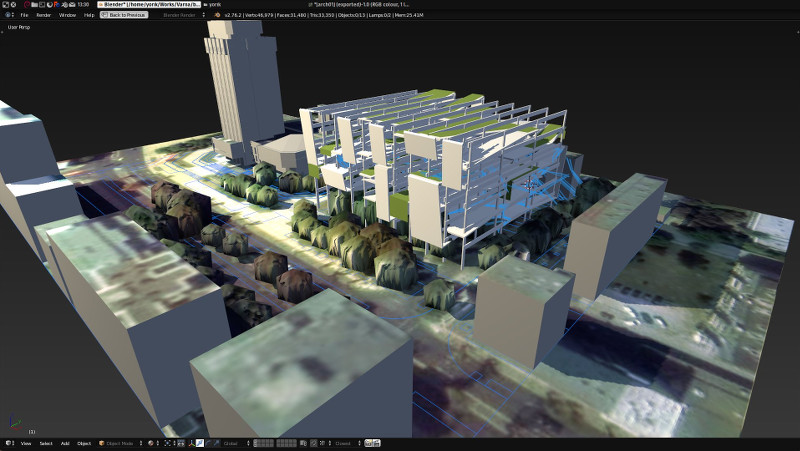
Formal learning
Just so you know about it, here goes an overview of the most important stuff you learn at arch school:
History of architecture: This seems boring, but it is actually pretty important. Everything you build, or will build, will become part of an existing world where other people have already tried other things before you, and where probably most of your brilliant ideas have already been tested somewhere. It is very important that you understand those things, why people have been doing things a certain way, and, even more important, that you don't repeat the same mistakes. In most arch schools, they will only teach you local history (European schools will teach only European architecture, Latin American schools only Latin American architecture, etc). I know, it's stupid, but that's the way they do...
Structural engineering: This is basically how to project buildings that won't collapse. How thick must be a brick wall, where do you need beams and columns, should they be in concrete or steel, what size should they have, what thickness must have a concrete slab, how much iron you need in it, etc. You must think this must be the most important course of the whole arch school, right? Wrong. In the past, architects needed to know these things to survive. Today, however, it is very rare to see a building project where you won't have a structural engineer with you, who will calculate all those things. As a result, architects have become very weak in that area. The stuff you learn at school is usually boring and insufficient, and given the situation above, you will hardly learn anything more after that. This is a deficiency we must fight at all costs.
Sketching: This is also very important. Although you hardly need to draw architecture projects by hand these days, your hand is still by far the quickest way to connect your brain to a visible result. It is so fast that your hand can draw things that your conscient self did not realize yet. When you are trying to get ideas, you often find yourself sketching things out, without really knowing what you are doing (like when you are in a boring phone conversation). In other words, you are "trying things". It is when you look at what you drew, that you begin to get ideas. Every artist will tell you that. It is a very fundamental point of architectural design. But this does not come for free, it requires a LOT of training. One thing I can guarantee you, no matter how bad you are at drawing, everybody can learn and become good, it just requires practice. Interesting afterthought: see Bob's article about sketching.
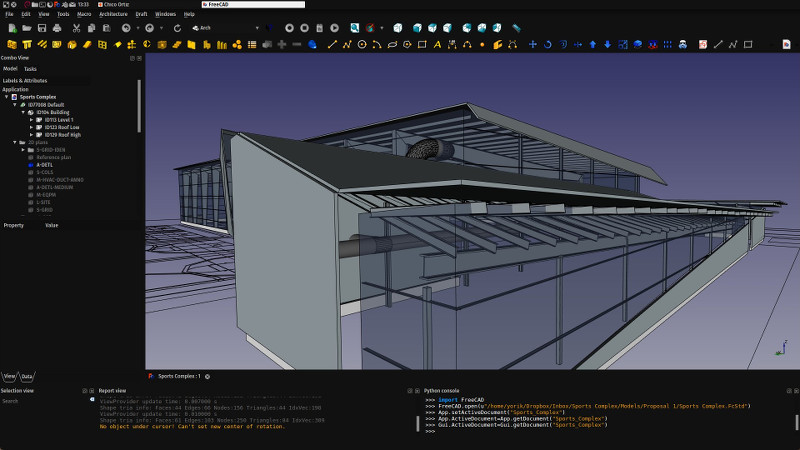
Architecture criticism: The term criticism, here, means: being able to look at existing architecture and other projects, and develop an opinion about it. In architecture, you should never (okay, rarely) say "I like this" or "I don't like this", or "this is beautiful"/"this is ugly". Because it is sterile. What if you say "I like this" and I say "I don't like it"? Which one of us is right? We can't tell, and therefore there is no point in discussing any further. Rather, you must train to look at architecture and detect WHAT you found good and what you found bad. Then we can discuss and learn something (we will remember it if we meet the same issue later in one of our projects). This is a very important point to understand in order to learn the unlearnable, which is how to do good projects. More on this below. Of course, the most important area where you must apply criticism, is to your own projects. And preferentially allow others to criticize your work as much as possible. Your best lessons will be there.
Doing architectural projects: Actually, they don't teach you that. On first day they give you a blank sheet of paper, and say: "Do a project now". Then you try, and then you'll try again many, many more times. That's basically how you learn. Of course, there are thousands of tricks you can learn on the way (what is a good size for a sleeping room, what is a good way to distribute apartments in a building, etc), but there are easy resources to learn that (more below). The thing is, you will never learn it all (the first time you'll need to do a hospital, there will be an awful lot you don't know, no matter how much you learned before), and, more basically, knowing all that is simply not enough. You might be able to design a house where all the rooms have the right sizes. You might even know everything there is to know about architecture, and do a perfect house, with perfect lighting, no defects, minimal energy consumption, etc. Even so this might be a plain, boring, uninteresting house. How to do good architecture projects is one of the most difficult, and unlearnable things in the world.
Lots of seemingly-important-but-actually-not-so-much stuff: Urban design (rather obsolete, usually, this is an area that is changing a lot), ecostuff and landscape design (you'll need to learn it all over again with each new project), ethics and other "good behaviors" (WTF), laws and regulations (unlearn everything as much as possible and relearn on case-by-case later, keep updating constantly), thermal and energy design (what you learn will already be obsolete when you're out of school), electricity, hydraulics and other building technologies (same thing), software (to turn you into a good Autodesk slave), economy (WTF v2)
Representation: Someone will have to pay for the building, right? You better be good at convincing people that your project is worth the money. Not only show how cool it is, but also make sure the owner gets what he/she wants, and show that it can be built for the price you pretend it will. They teach you a lot of stuff in that regard, of dubious importance. Suffices to say, one way or another, you will need to learn to show your work, and to show how to build it. Rather than learning a dozen of obsolete drawing conventions, in my opinion, one should constantly reflect on that during one's life, and constantly update to the best way to achieve these goals. Being it with drawings, images, models, computer 3D, or anything better that the future will bring.
At the end, they give you the degree. That's the really good thing. Keep in mind that these degrees are rarely valid internationally (except between European countries and a couple of other cases), if you migrate to another country, expect lots of headache and bureaucracy to be able to practice there...
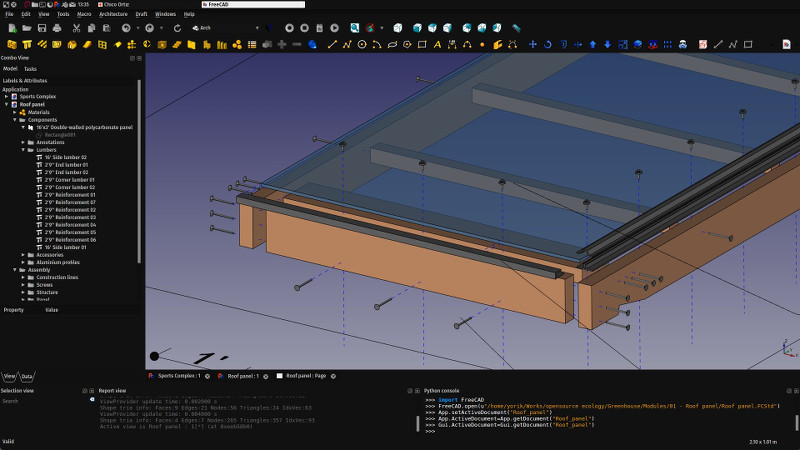
What you don't learn at school
This could be a huge chapter, but let's do it short. When you are fresh out of school, you know almost nothing. I had heard older architects say it takes you about 10 years of practice to become a reasonable architect (it's been 20 years and I have seen no sign of it yet). Basically most of the useful stuff you'll learn out of school, by doing. The first thing they give you to do in your first job, you have absolutely no idea of how to do it. "Turn this sketch into a construction plan, before tomorrow!" for example. You don't even know what a construction plan is. So you ask your new colleagues what it is you must do and how to do it, they will give you another one as an example and tell you to do the same, and that's how you'll learn most of the job. I've seen people with no architectural background at all being hired as interns in architecture offices, and managing it as well or better than architects fresh out of schools.
You need to learn all the complex world of how to build things. What is needed to do in order to have a built house ready? How long does it take? How much does it cost? What are the different alternatives to build a certain thing? How do they compare? Plus, all this changes completely every 10 years, so you must update your knowledge constantly. This might sound frightening when said like that, but it is actually not different than most other jobs, if you want to do it well.
There is no real reason why the above should scare you, if you put your hands into architecture, and you succeed in steering towards it for good, it will come naturally, step by step. You only need to keep open to it and swallow as much information as you can, specially coming from people who know how to build (masons and other people from the worksite). What they have to tell you is precious.
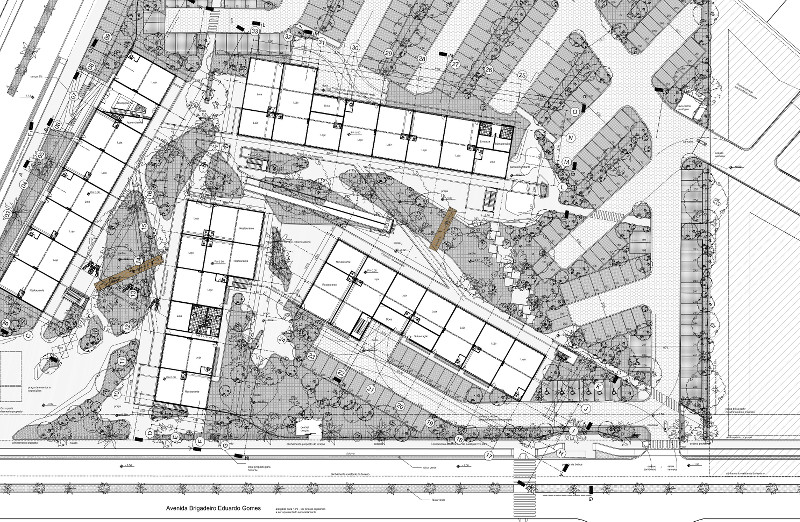
So what should you learn
The most fundamental thing you need to do as an architect is to do meaningful work. When you build a building, you are changing the built world, and you are spending an awful lot of, in safest cases, someone else's money, or, in most serious cases, public money. People will have their life changed because of what you did. You might kill people (construction workers, because you designed something which turned out to be difficult and dangerous to build, but also people who will suffer just a little bit everyday, because of something you did, and who might die of it one day, people depressed by their contemporary city life, for who your bad building might be just the drop too much, etc). But you can also make people happy. Not only people who will use your building, but maybe everybody in that city might be just a little happier (think of a new park for example, or a cool new theatre). A good project is a mix of several things that are hard to define and that you won't find anyone who can teach you at once. You need to learn that yourself from scratch. It will take your whole life.
As painters have color as their tool, musicians have sound, architects have space. Architecture is basically the design of space. This is a very large concept. It is not only interior spaces, like rooms, halls, etc. but also more generally, any place where you can find yourself as a human being. The facade of your building shapes the portion of the city in front of it, visually, of course, but also socially (will people go in and out there? Will it be an empty place or full of people?), even physically (Will it project shadow on the sidewalk? Protect from the rain?). Architecture is not about designing beautiful stuff (same as above, what if you find it beautiful and I don't? Who is right?). Everything we call beautiful, ornamental, is actually part of shaping a space. Giving it meaning. Saying something with it. All of the learning above (history, structural design, sketching, etc) only serves that purpose: help you to design better spaces.
And finally, there is one big issue that becomes everyday more critical. The world is becoming everyday more unequal. A small minority of rich people is swallowing (and in many cases destroying) almost all of the resources of the Earth, leaving almost nothing to half the people of the planet. Architects have massively taken side with the rich part, are working for them (poor people are thought to have no money for a building), and contribute to maintain the situation as it is by creating secluded spaces where only some are allowed. To the vast majority of the people of this planet, what most architects do is meaningless and doesn't make the world better. How can we change that, make architecture a tool for social changes, instead of something that helps inequity to prosper, for me this is the most important question of all. I haven't found a clear answer to this yet.
These are all very difficult things to learn of course. I'll give some ideas and resources below, but remember that none of them will directly teach you anything of the above paragraphs. Rather, you should consider that your true skill at architecture builds upon the pieces you gather here and there, so you'd better start at gathering.
There is one more thing: you need to train a lot. Your tools, and your capacity to get ideas, to test your ideas, and to turn your ideas into feasible, concrete, practical constructions. This needs constant effort and practice, a bit like a monk needs to pray every day. Hand drawing is very important for the reasons above, but I also think 3D modeling and the understanding of 3D space that comes with it is also fundamental, although often disregarded by architects. That places people who are good 3D modelers as excellent candidates to do architecture. Fortunately, that's an easy part, as there are abundant learning resources, even if not fully tailored for architecture.
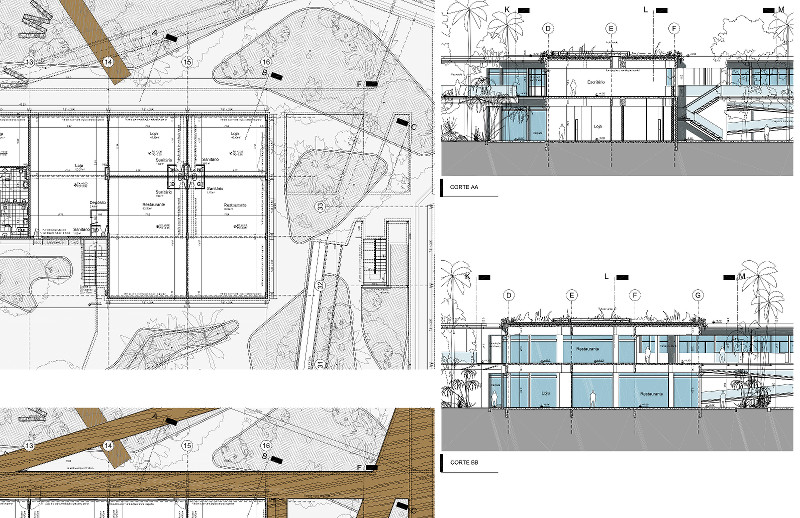
Resources
I'm going to divide stuff into categories. It's mostly stuff that I find good or important, or that helped me a lot. Be aware that this is by no means complete, I'm pretty new at that game, but I'll keep looking and updating this section. If you know a good resource that is not listed below, please drop a comment!
Books
Architecture
Le Corbusier: Toward an architecture: This is a very fundamental book written by the famous modernist architect Le Corbusier. In my opinion, it tells you more about how one can situate oneself in relation to the history than a whole history of architecture course. You should certainly not embrace or follow blindly what's in that book, specially because it was written in 1920 something, and things have changed since then, but what is written in this book is still extremely meaningful, and has revolutionized architecture.
Architect's Data (more simply known as "the Neufert"): This is the holy bible of architects, that everybody has on his desk (it's easy to "get" in ebook version). It contains the whole range of precious human data like the optimal height of a sitting bench, of a table for eating, for working, the size of the equipment in a bathroom, etc along with many examples. In other words, everything you need to know about what size you must give to things used by humans.
A Pattern Language: This is an intriguing and interesting book that tries to attack the problem I've explained above: How do you do good architecture. It explains how to identify and make patterns, or, rules that produce good results. For example, "A kitchen is best with windows oriented toward East" (it actually is, because then it gets the nice morning sun, and not the hot afternoon sun, then stays cool at night). By combining several of these patterns, you build what he calls "design structures". It tells a lot about the "rules" you use when you design something.
The Architect's Portable Handbook by Pat Guthrie (No wikipedia link, easy to find on amazon or "other places"...): Okay, you want the whole Architecture course in one book? Here it is. It might seem simplistic (5 years course in one book?) but if you read that book entirely, I would bet you will know more than most architects when they are out of school (certainly more than me at that time).
The Death and Life of Great American Cities: A famous book by Jane Jacobs, a worldwide classic about what makes a good city. I didn't understand fully the impact of that book while I lived in Europe, since what it describes is (or better said was, at that time) pretty distant from the Euroreality. Out of it, though, it is a very different story... Highly recommended if cities interest you.
Architecture: Form, space and order: by Francis Ching. A (the most?) classical student book that talks about form, basically why buildings are usually square, why greek columns look that way, why we like (so to speak) windows with a cross in it, why churches have that shape, etc, etc. A masterpiece about why architects did what they did, and what lessons we can get from that.
Yes is more by BIG: A comic book by starchitect office BIG, explaining some of their projects. I'm not a big fan of BIG (they give too simplistically clean answers IMHO, and live a bit in a fairy world), yet this book is pretty cool, it gives a lot of insights about their design process, and, let's face it, they might actually be right somewhere...
Cities for people by Jan Gehl. This is a pretty recent book (you'll find it in any bookstore at the time I'm writing this), which I believe illustrates very well, although it's more talking about city space than building space, the shift that architecture is currently doing. We don't need more posh, nice-looking buildings in a city anymore. We need to think about people. That's what this book is about. Highly meaningful.
Structural engineering
Concreto armado eu te amo by Manoel Henrique Campos Botelho: Sorry, portuguese only, I don't think there is a translation. This book is a really awesome, gentle, architects-friendly introduction to reinforced concrete. In my opinion something architects should know a lot more about than they currently do. I love this book. I've never seen any equivalent in other languages, unfortunately.
Statics and Strength of Materials for Architecture and Building Construction by Barry Onouye: This is a very good book because instead of the usual theoretical stuff it is very Architecture-oriented. There is an online version on slideshare.
The Civil Engineering Handbook by W F Chen: Honestly, this one is too heavy for me. However, it is widespread on the net and basically tells everything there is to know... Maybe even too much...
Sustainability, green and community design
The Barefoot Architect by Johan van Lenghen: A wonderful handbook for community-driven green building, written by a guy who has experienced everything he describes first-hand. Nothing about flashy LEED specifications and latest solar panels technology here, rather simple techniques that can be used by normal people to build sustainable buildings.
Online courses
Wikiversity Architecture School: Don't expect anything very complete here, but it's a very good introduction to the family of things that you need to learn. I contributed a bit to it in the past...
Architecture Academy (introduced above): This is a pretty bright idea of Andrew Price. The idea is to teach you both notions or architecture and rendering at the same time, as if it is one same subject, using Blender. It is not free, however.
Archdaily has a good list of free online architecture courses. There is more here. A famous one that is there since a long time is the MIT. However, this is a whole new thing, and probably at the moment you shouldn't rely on these to get a complete formation to architecture. Rather take them as starting points.
Latest find: edx.org. This place gathers a lot of interesting courses.
Websites and other online resources
Architecture in general
ArchDaily: This is today's most active architecture website (there are many others, such as architizer, archello, etc, but archdaily has a crazily awful LOT of stuff). I highly recommend you subscribe to it, and keep a look at every project (the texts are often written by the architects themselves, and are not always worth the reading). There are a lot of new projects, several every day, some good, some bad, but it is an excellent exercise to look at them and try to find things you find good and things you find bad. Discussing this with others helps a lot. I also often use archdaily to find references and examples of a certain building type (school, library, etc). Your capacity to find a solution for a specific problem often builds on pieces of existing solutions and examples you saw before.
Life of an Architect: This is Bob Borson's blog, where he tells about the everyday stuff that happens when you work as an architect: Problems, existential questions, practical details, etc. Always a very funny and interesting read.
ArchViz
If you are interested in ArchViz (I hope you are by now!), one of the most famous places is cgarchitect. There is not much learning material there, but looking at some of the most gorgeous images and trying to copy something from them has always been a big way of learning for me... CGarchitect also has a lot of learning resources, both free and paid.
Ronen Bekerman's blog: This guy is one of the big archviz gurus. He (and other guest writers) writes detailed articles about his work, that are one of the most amazing archviz resources I know...
Alex Hogrefe's blog is exactly at the crossing of architecture and archviz that we were talking about. Highly interesting.
There is much, much on the net related to archviz, simply look for "archviz tutorials".
Sketching
Sketching tutorials are also easy to find on the net. I found two pretty good examples from land8 here and here, there is also some interesting contents here, although it concerns not only sketching but also traditional technical drawing, which can be useful to you too.
Alphonso Dunn's youtube channel: This is a fantastic resource for hand sketching, full of different and useful techniques. Specially don't miss the awesome 3-part urban sketching tutorials.
Structural engineering and mechanics of materials
A foreword note here, this is a vast subject, usually badly explained (most architects only understand a very small part of the matter). There is very little learning material on the net that is specifically aimed at civil engineering and architecture that is not overwhelmingly complex. I'll list a couple of good things I found, but you'll likely need to dig further by yourself here.
Complete Mechanics of Materials course: This one is pretty complete, but not easy to follow.
Introduction to Structural Mechanics: A very good course aimed at scenery design, but that works pretty well for architecture too. It also contains a quick refresher on basic maths, always useful...
Course de statique et résistance des matériaux: A complete and pretty good course from the Lyon university (in french).
Physique pour l'architecte: Another nice andvery complete course (in French) from Tunis university.
Checklists
There are a lot of checklists for architectural design on the net, that try to gather all the things you must think to when doing an architecture project. Of course this is vastly subjective, each architect will probably find something very important that others will disregard. I found a couple of nice ones, for example this one or that one, but you will find many others by searching for things like "architectural design checklist" on the net.
Real life
This is a very important part. Explore cities and buildings. Find good architecture in your city or nearby. If you are going to another city, check on the net about interesting architecture in that city, and try to visit the buildings (not always possible of course). Again, this works better when done with other people. Also, from now on, dedicate yourself to walking. By far my favorite way of getting new ideas is walking (in cities or in the wild, you learn different things in each). Walking in cities while keeping your eye open to your surroundings is a precious and free continuous lesson. Look at the buildings, the people, where they gather, where they don't go, what places are cool, what places aren't, and why, these things will be highly useful to you at some point.
Urban sketching: This is a great way to train hand sketching. In many cities, groups of people gather regularly to sit together in some place to draw just anything around: Buildings, people, cars, pissing dogs, whatever. Don't be shy, many people there are newbies too, and drawing together with other (and specially some experienced) people will boost your skills amazingly. Look on the net, usually these groups have facebook pages or blogs where they plan their next events.
Competitions: Architects are crazy about architecture competitions. These are traditionally organized by a person or organization who wishes to make a building, but instead of selecting one architect, would like to see many ideas from many architects. Usually they ask participants to submit a project up to a certain level of development, then select a couple of entries, which are paid to develop further, then finally select a winner who gets the full commission. Unless you win, you earn nothing from a competition, but it's anyway a great way to test and show your ideas and make yourself known. There are many websites that list architecture competitions, such as Death by Architecture. Beware, though, that nowadays some firms are doing business by luring architects into entering competitions, and making them pay for it. Flee away from competitions that are not free to enter, where the organizer is not the owner of the future building, or where it is not clear if the building will actually be built.
Real work of architects: Architects are usually pretty secretive and afraid that someone might steal their ideas, but some visionary people are trying to change that and publish their work files online, like Opening Design or Regis Nde Tene (and, hopefully soon, ourselves). These are highly precious, direct-from-the-source ways of discovering how things work. They might also be an answer to some questions raised above...
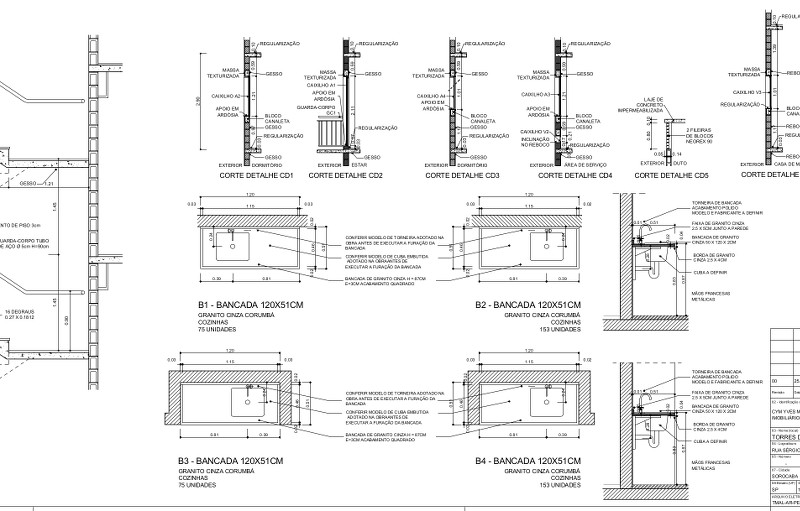
Software
Finally, just a quick note about software, as it is an important matter to me. No need to tell you how to learn how to use a certain piece of software here, as it is by far the easiest thing. Just head to youtube.
What architects use: 2D line-drawing applications (known as CAD) such as AutoCAD, VectorWorks, MicroStation, AllPlan (most of these also do 3D nowadays), BIM applications (ironical description: 3D modeling plus a lot of dingles and bells for architects. More serious description: 3D modeling with added meaning and lots of additional layers of information) such as Revit or ArchiCAD or some very good Rhino plugins, rendering tools such as 3DS Max + VRay (all-time big favorite combo among architects)
What I use: Blender (opensource, generic, fast 3D, for the first phases of design, also used for rendering), FreeCAD (opensource, I'm one of its developers, I used it to turn the dirty models from first phases into construction drawings, but it's taking more and more place in the whole workflow), DraftSight (free but not open-source, 2D line drawing), plus a couple of others like Inkscape, Gimp, IfcPlusPlus, LibreOffice. That's basically all you need. All free, all open-source.
I wrote a tutorial about doing architecture modeling with FreeCAD if you are interested.
Check what you like best, but I highly recommend you to stick as much as possible with open-source tools (Blender and FreeCAD basically). Big CAD and BIM vendors (Autodesk or Nemetschek/Graphisoft for example) often have deals with arch schools, where they provide their software for free for students and professors. When you get out of school, you are then a perfect slave, fully addicted to the products of one vendor, and they can do what they want with you (An average license for BIM software is about 6000 US dollars...). Going for open-source tools is a bit more work (they are less comfortable and usually not as "finished" as commercial tools), but will make you learn to work with generic tools, workflows and formats, instead of binding yourself to a commercial solution.
